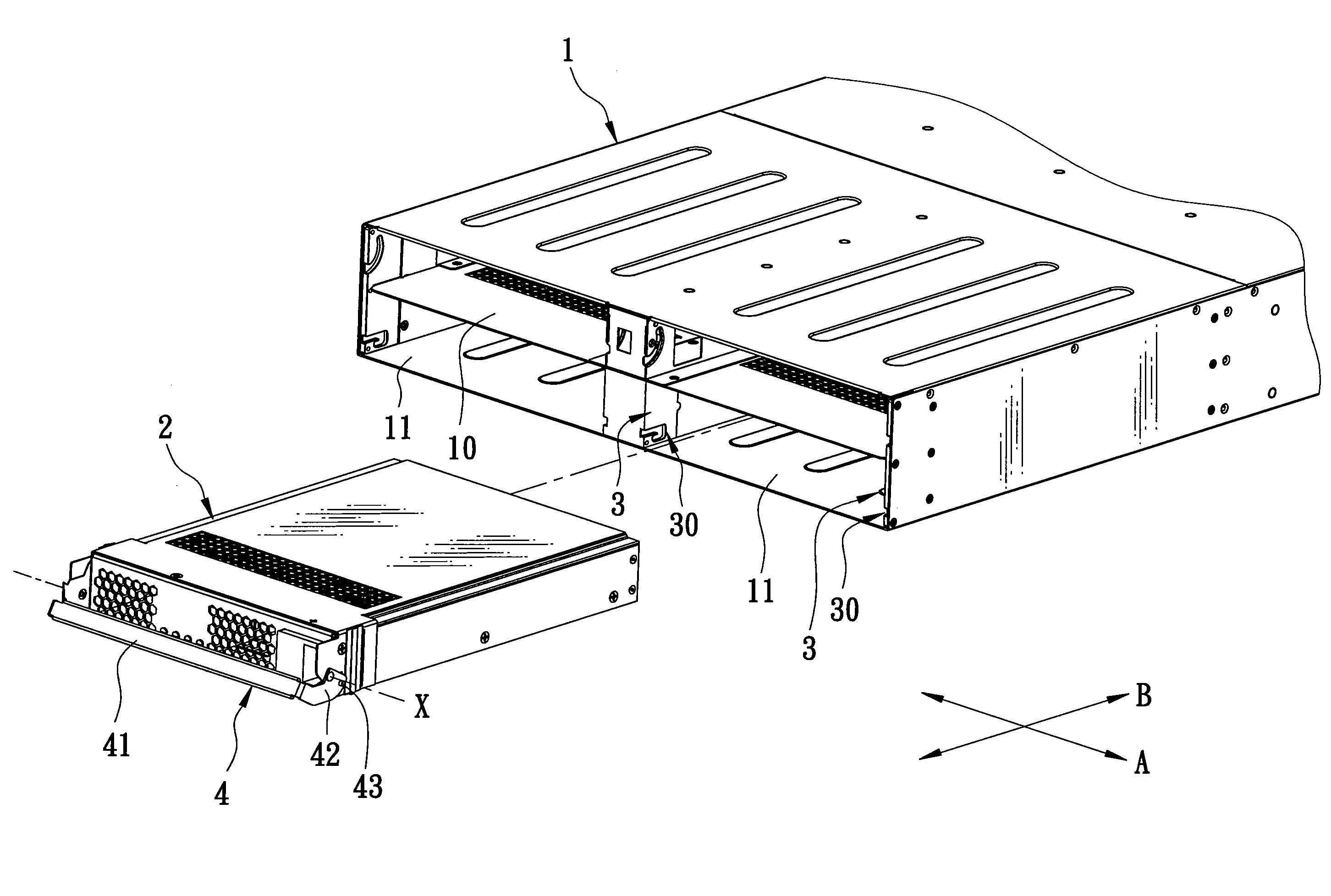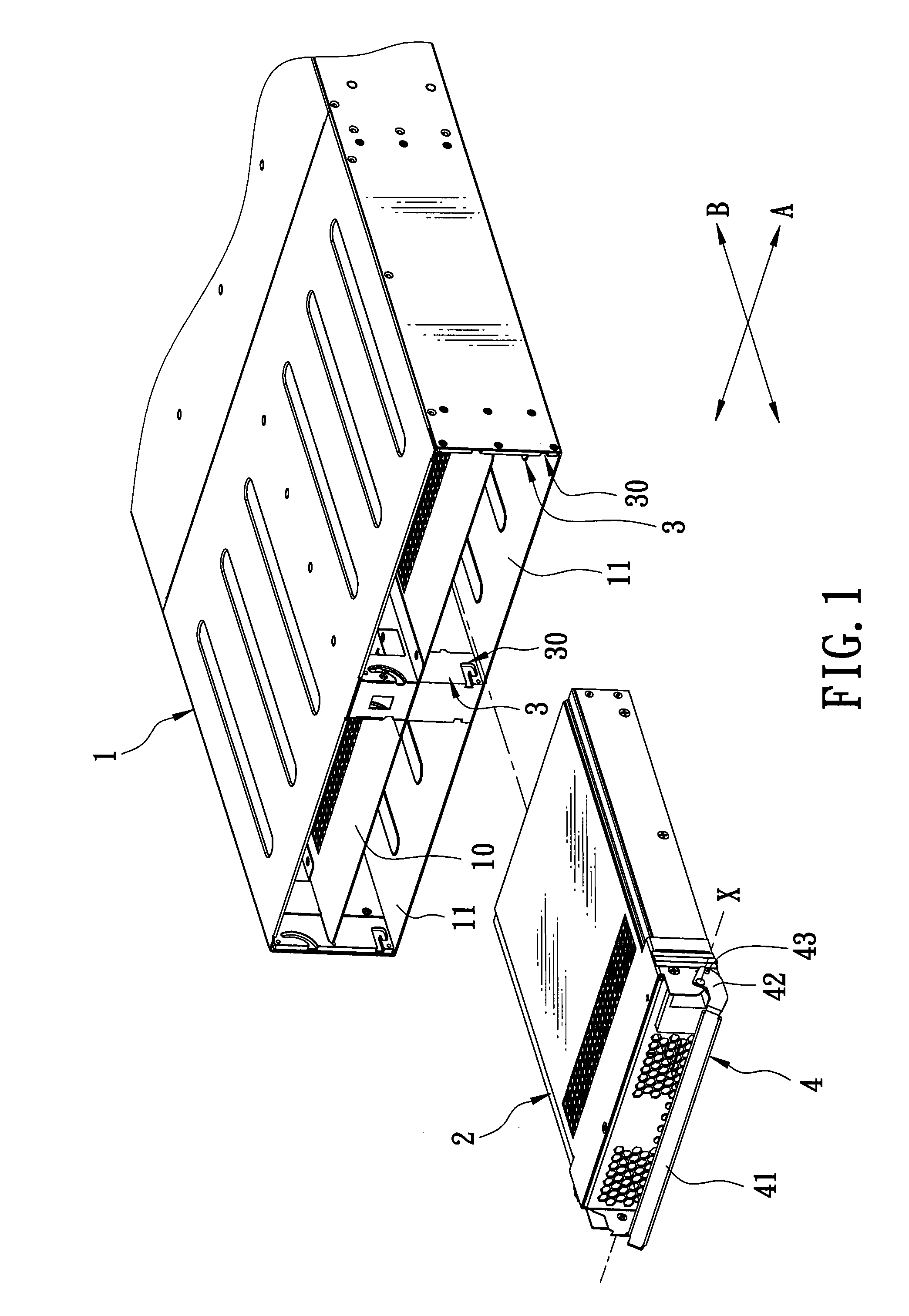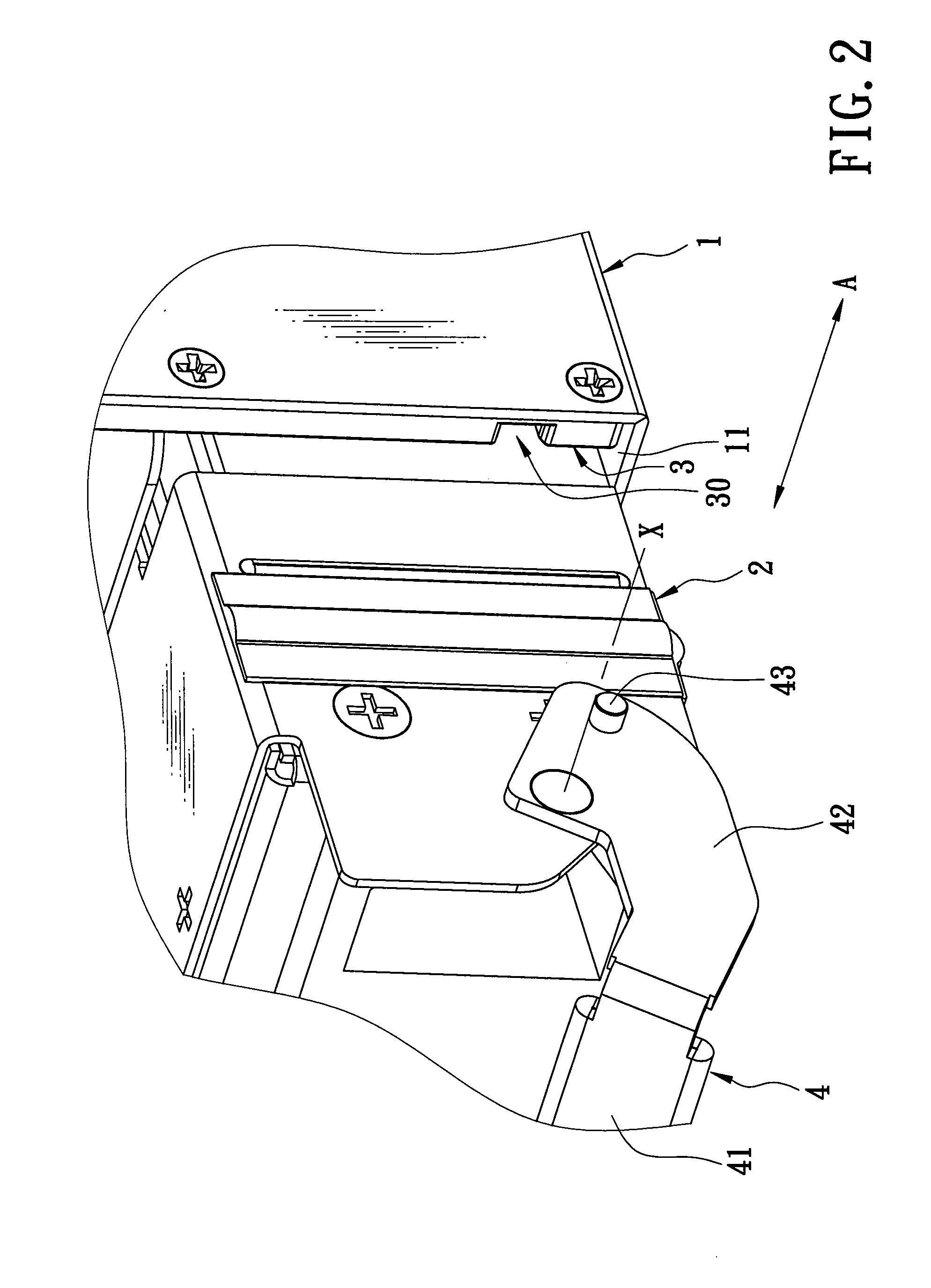Positioning device adapted for positioning a detachable module in a housing
- Summary
- Abstract
- Description
- Claims
- Application Information
AI Technical Summary
Benefits of technology
Problems solved by technology
Method used
Image
Examples
Embodiment Construction
[0016]Referring to FIGS. 1 to 3, the preferred embodiment of a positioning device according to the present invention is shown to be adapted for positioning a detachable module 2 in a housing 1. In this embodiment, the housing 1 has a front open side 10, and is configured with four insertion grooves 11. The housing 1 further has four connecting ports 12 (only one is shown in FIG. 3) disposed adjacent to a rear side thereof and corresponding respectively to the insertion grooves 11. The detachable module 2 has a connector 21. When the detachable module 2 is positioned in a selected one of the insertion grooves 11 in the housing 1, the connector 21 of the detachable module 2 is connected electrically to a corresponding one of the connecting ports 12. The positioning device includes a pair of guiding members 3 and a pivot member 4.
[0017]The guiding members 3 are adapted to be mounted fixedly in the housing 1, and are spaced apart from each other in a first direction (A). In this embodim...
PUM
 Login to View More
Login to View More Abstract
Description
Claims
Application Information
 Login to View More
Login to View More - R&D
- Intellectual Property
- Life Sciences
- Materials
- Tech Scout
- Unparalleled Data Quality
- Higher Quality Content
- 60% Fewer Hallucinations
Browse by: Latest US Patents, China's latest patents, Technical Efficacy Thesaurus, Application Domain, Technology Topic, Popular Technical Reports.
© 2025 PatSnap. All rights reserved.Legal|Privacy policy|Modern Slavery Act Transparency Statement|Sitemap|About US| Contact US: help@patsnap.com



